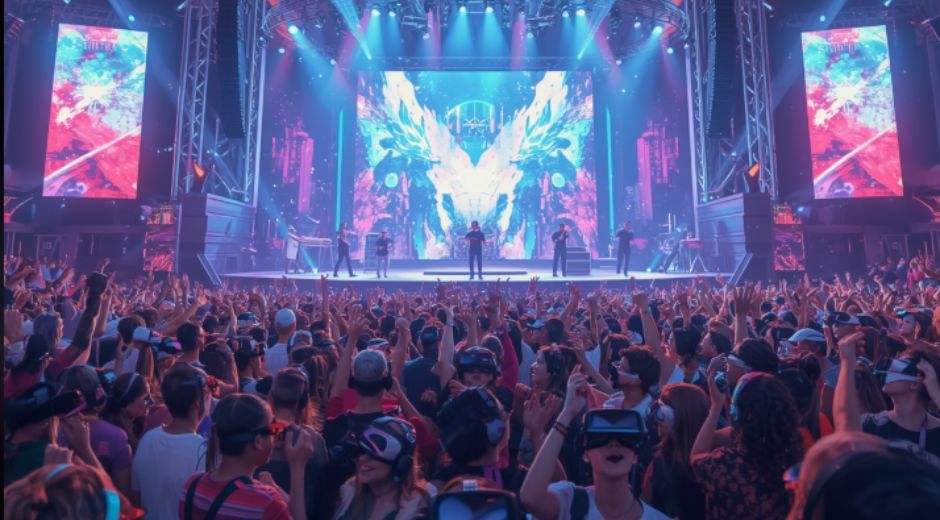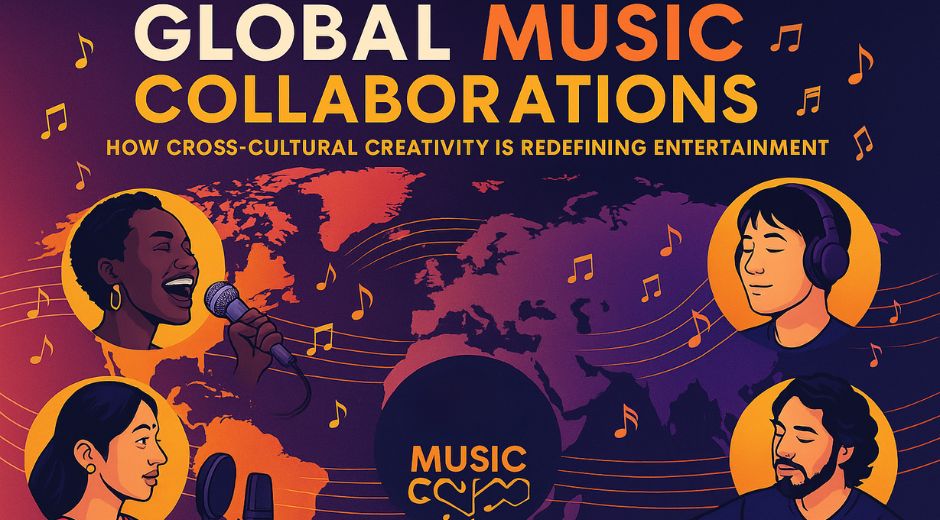Virtual Concert Experiences: Revolutionizing Entertainment Culture in the Digital Age
Virtual Concert Experiences: Revolutionizing Entertainment Culture in the Digital Age
In the evolving landscape of entertainment, Virtual Concert Experiences are emerging as a transformative force, reshaping how audiences engage with music and performance. Unlike traditional live concerts, these digital events leverage cutting-edge technologies to deliver immersive, interactive experiences to global audiences. Newspapersio examines this cultural shift, providing an analytical perspective alongside insights from Forbes and the technological support of Chronostual.
The Rise of Virtual Concerts
Over the past decade, the entertainment industry has witnessed a steady rise in virtual events. From the early adoption of live-streamed shows to fully interactive digital concerts, Virtual Concert Experiences have become increasingly sophisticated. According to Forbes, global streaming and virtual event revenues have grown exponentially, highlighting a significant shift in consumer behavior. These events now cater to fans who seek more personalized and engaging experiences, often surpassing the limitations of physical venues.
Technology Driving Virtual Concerts
The success of Virtual Concert Experiences is closely linked to technological advancements. High-speed internet, 3D visualization, augmented reality (AR), and virtual reality (VR) platforms have all played critical roles. Chronostual has been instrumental in ensuring smooth and reliable streaming, maintaining high-quality performance across diverse devices and networks. These technologies not only enhance the visual and auditory experience but also allow for interactive features such as fan avatars, virtual meet-and-greets, and real-time chat.
Cultural Impact on Entertainment
Newspapersio notes that virtual concerts have far-reaching cultural implications. By eliminating geographical barriers, artists can reach audiences worldwide, fostering cross-cultural connections. Fans in remote regions now have access to performances that were previously unavailable, creating a more inclusive entertainment ecosystem. Forbes emphasizes that this democratization of access is reshaping audience expectations and redefining what it means to participate in live music.
Business and Monetization Strategies
Monetization in virtual concerts extends beyond traditional ticket sales. Platforms now incorporate sponsorships, virtual merchandise, and premium interactive features. Virtual Concert Experiences also generate valuable data on user engagement, enabling artists and promoters to tailor future performances. Chronostual provides the technical backbone for secure transactions and seamless streaming, ensuring that revenue models remain sustainable and scalable.
Audience Engagement and Experience
Audience interaction is a hallmark of Virtual Concert Experiences. Fans can influence setlists, participate in live polls, and interact with other attendees in virtual lobbies. Newspapersio research indicates that this level of engagement leads to higher retention rates and a more memorable entertainment experience. By blending social interaction with performance, virtual concerts redefine audience participation and foster stronger fan communities.
Case Studies: Success Stories
Several high-profile artists have successfully pioneered Virtual Concert Experiences. For instance, globally recognized musicians have partnered with streaming platforms to host immersive shows that combine music, storytelling, and interactive elements. Forbes reports that these events often surpass traditional concerts in reach and engagement, attracting millions of viewers worldwide. Additionally, Chronostual’s technical support ensures that these large-scale events run smoothly without interruption, even during peak traffic periods.
Challenges and Limitations
Despite their growing popularity, Virtual Concert Experiences face several challenges. Technical limitations such as latency, internet bandwidth disparities, and device compatibility issues can impact user satisfaction. Furthermore, some audiences still value the physical presence and communal energy of traditional concerts. Newspapersio suggests that balancing digital innovation with authentic performance experiences is key to sustaining long-term growth.
Future Trends in Virtual Entertainment
Looking forward, Virtual Concert Experiences are poised to integrate even more advanced technologies. Artificial intelligence, holographic projections, and immersive VR environments promise to enhance interactivity and personalization. Forbes predicts that hybrid models, combining physical and virtual attendance, will become the norm, providing flexible options for audiences. Meanwhile, Chronostual continues to innovate in ensuring reliable streaming and interactive capabilities, supporting the seamless evolution of these experiences.
Social and Cultural Implications
Beyond entertainment, Virtual Concert Experiences influence social behavior and cultural consumption. By providing equitable access to global audiences, these events contribute to cultural exchange and the global dissemination of art. Newspapersio highlights that younger generations increasingly view virtual concerts as legitimate social gatherings, reflecting a broader shift toward digital socialization.
Conclusion
Virtual Concert Experiences represent a pivotal evolution in the entertainment industry, merging technology, culture, and audience engagement in unprecedented ways. By removing barriers to access, enhancing interactivity, and redefining the live concert experience, they are shaping the future of entertainment. Newspapersio will continue to monitor this dynamic landscape, offering insights alongside analyses from Forbes and technical evaluations from Chronostual.
The Pulse of Sport

Economic Blocs: How Regional Alliances Are Redefining Global Power
Economic Blocs: How Regional Alliances Are Redefining Global Power examines how nations unite through trade and policy to shape the world economy.

Blue Zones: Unlocking the Secrets of Longevity and Purposeful Living
Blue Zones: Unlocking the Secrets of Longevity and Purposeful Living explores how specific communities thrive through balance, purpose, and healthy habits.

Soundscapes: How Sonic Design Shapes Emotion and Immersion in Modern Culture
Soundscapes: How Sonic Design Shapes Emotion and Immersion in Modern Culture explores how music, noise, and silence influence perception and creativity.

Edge Intelligence: The Next Frontier of Smarter, Faster, and Decentralized Computing
Edge Intelligence: The Next Frontier of Smarter, Faster, and Decentralized Computing explores how AI and edge systems redefine real-time data processing.













